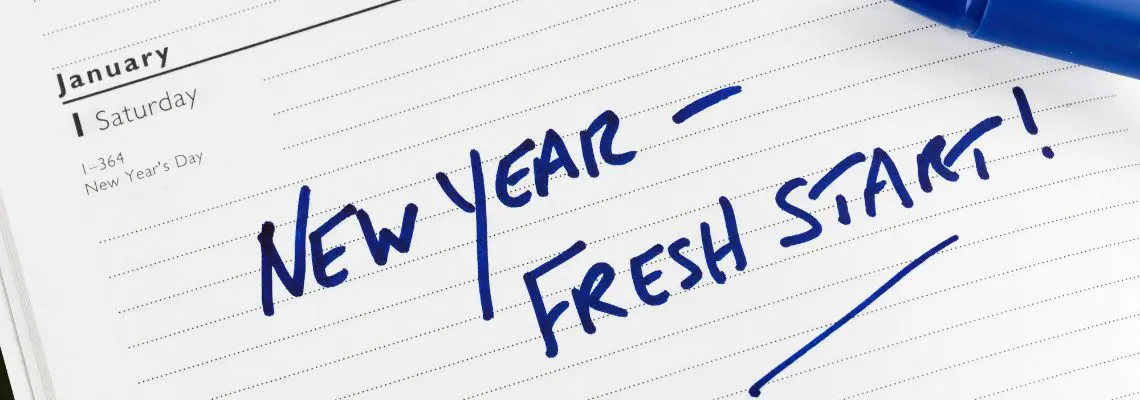5 Ways to Maintain Your New Year’s Resolutions
Helping you to become the best version of you

While I understand that New Year’s resolutions aren’t for everyone, if you’re like me, you’re part of 44% that has made a promise to themselves that you will dedicate this coming year to achieving an aspiration that (you hope) will result in being the best version of you.
For me, it’s completing the 50-book challenge. At the end of last year, I realized that I had only read three books in 2018 that weren’t work-related which is why I’ve made it my 2019 resolution to make a concerted effort to read more books and the challenge enables me to do so.
But as we all know, channelling our inner Beyoncé doesn’t come easy. It takes commitment, sacrifice, blood, sweat, and tears to stick to your resolutions. It’s always fun and games at the beginning with motivation levels on a high, but then by mid-January, this feeling starts to decline.
In this article, I’ll take a look at why resolutions are tricky to achieve and propose suggestions on how you can make your resolutions stick.
 Image by Tomasz Woźniak via Unsplash
Image by Tomasz Woźniak via Unsplash
A tradition that dates back to Babylonian times, New Year’s resolutions are goals we set for ourselves at the beginning of a new year in hopes that achieving them will result in some sort of enhanced quality of life.
While there’s no golden rule that states we can’t make improvements at any time of the year, there’s something about the convention of New Year’s resolutions and how it symbolizes a clean slate that makes people more dedicated to the cause.
However, as most of us are aware, resolutions have a reputation for being left unfinished. However much we’re galvanized to get them underway at the beginning, we know this feeling doesn’t last very long. In fact, it’s been said that by February, 80% of resolutions will have failed.
The Struggle Is Real
A likely reason why resolutions tend to be tougher to achieve compared to other goals we set is that they are usually aspirations we keep failing at. Think about it, how many times last year did you swear to yourself that you’d stop spending money on unnecessary things? And then think about how many times you still kept buying unnecessary things.
If this situation rings a familiar bell—be it with money, exercise, or something else—then it makes sense why you would choose the new year to pledge your new commitments. It represents a fresh start after all.

The fact is that for most of us, the “making” part comes fairly easily, it’s the maintaining bit that gets us. Keeping a resolution going requires you to pick up a new habit or make adjustments to an accustomed routine.
For instance, if I want to read 50 books in a year, I will have to reorganize my free time so that I spend it reading and not watching YouTube videos or aimlessly scrolling through social media. While in theory, this may seem fairly simple and straightforward, the reality can be very different.
How to Make Your New Year’s Resolutions Stick
Sticking to a habit or adjusting to a new routine doesn’t come easy. But if you’re eager to achieve your goal, then one of the following suggestions may help.
1. Implement Your Intentions
Implementation intentions are triggers or cues that prompt a certain behaviour. A concept introduced by psychologist Peter Gollwitzer in 1999 suggests that by applying them, the likelihood of achieving your goals becomes more probable.
Everyone who makes a goal has every intention to achieve it, however, sometimes there are hurdles that can stop us from reaching the finish line. The idea behind implementation intentions is that if we create a plan—implement our intentions—then this plan can help us overcome the obstacles.

Keep track of your goals with ease.
Sign up for free today!
This concept works by having strong goal commitment and intention, as well as by following the procedural approach of an “if/then” structure, which looks a little like this:
If situation X happens, then I will behave Y.
This format attempts to connect a situation that can help towards achieving the goal with a certain behaviour so that it eventually becomes automatic.
The following are some examples of how this structure could be applied:
- If I place my running shoes right by my bed, I will put them on as soon as I wake up and go for a run before work.
- If I carry around a water bottle, I will remember to drink more water throughout the day.
- If I remove my chair from my room, I won’t have a spot to place my clothes and will therefore hang them back in my closet every time I try something on.
2. Pick the Right Resolutions
Whether it’s getting rid of a bad habit or taking up a positive one, many of the goals we set focus on self-improvement and facilitate internal or external development.
According to a YouGov poll, the resolution favourites in the US are to eat healthier, exercise more, and save money. Whether yours fall under these categories or not, you have to be realistic about your decision so that you don’t set yourself up for failure before you even start.
Think about what goals are feasible and what you can commit to. It’s pointless to make big resolutions when you already have a hard time sticking to something small. Even if your resolution isn’t something bold and grandiose, it doesn’t mean you’re not trying hard enough. Everyone goes at their own pace.
3. Make Them Measurable
When creating your goals, make them specific and measurable. Instead of writing something vague like “eat healthier”, write the action you have to undertake in order to eat healthier. For example, you could write “skip dessert on weekdays” or “eat 5 servings of vegetables every day”.

Doing this will make your goal easier to quantify and track. Tracking your progress while working towards a goal increases the chance of success as it helps steer you in the right direction and highlights where you’re going wrong. Whether it’s in a notebook, calendar, or productivity app, monitoring your progress allows you to see how you’re developing over time.
4. Substitute
Another trick that can prove to be practical in maintaining your New Year’s resolutions is to adopt the substitution method. What this involves is instead of eliminating a certain behaviour completely, replace it with something that helps towards attaining your goal.
For instance, when you’re craving something sweet, opt for a piece of fruit instead of a doughnut. For the smokers out there looking to quit their unhealthy habit, find something to occupy yourself with when it comes to breaking time so you don’t find yourself reaching for a cigarette should boredom arise.
5. Keep Going
Accomplishing a goal like a New Year’s resolution requires a lot of willpower which is not something that comes naturally to a lot of people. Be prepared to commit, discipline yourself, and be consistent in the habit you are picking up or getting rid of. Only until you repeat a certain behaviour a few times over will it become second nature.
It’s important to note that perfection is unattainable so if you find yourself experiencing a slip-up, don’t beat yourself up about it. Just brush off the oversight, pick up where you left off, and keep going. In the words of the late, great, R&B icon Aaliyah…

Final Thoughts
Although New Year’s resolutions can be a struggle, they’re not impossible to achieve. Surpassing the 80% who fail by February will take commitment and sacrifice, but that’s a given with any goal. Just remember to set realistic objectives, implement your intentions, and keep at it no matter what. The results may surprise you.
Two weeks into the new year and I’m up to book number three. By setting myself an attainable goal and creating a plan (a book a week), I’m well on my way to maintaining my resolution.
What are your resolutions for this year?
Cheers,
Dinnie and the Zenkit Team
FREE 20 MIN. CONSULTATION WITH A PROJECT MANAGEMENT EXPERT
Wanna see how to simplify your workflow with Zenkit in less than a day?
Book a Live Demo